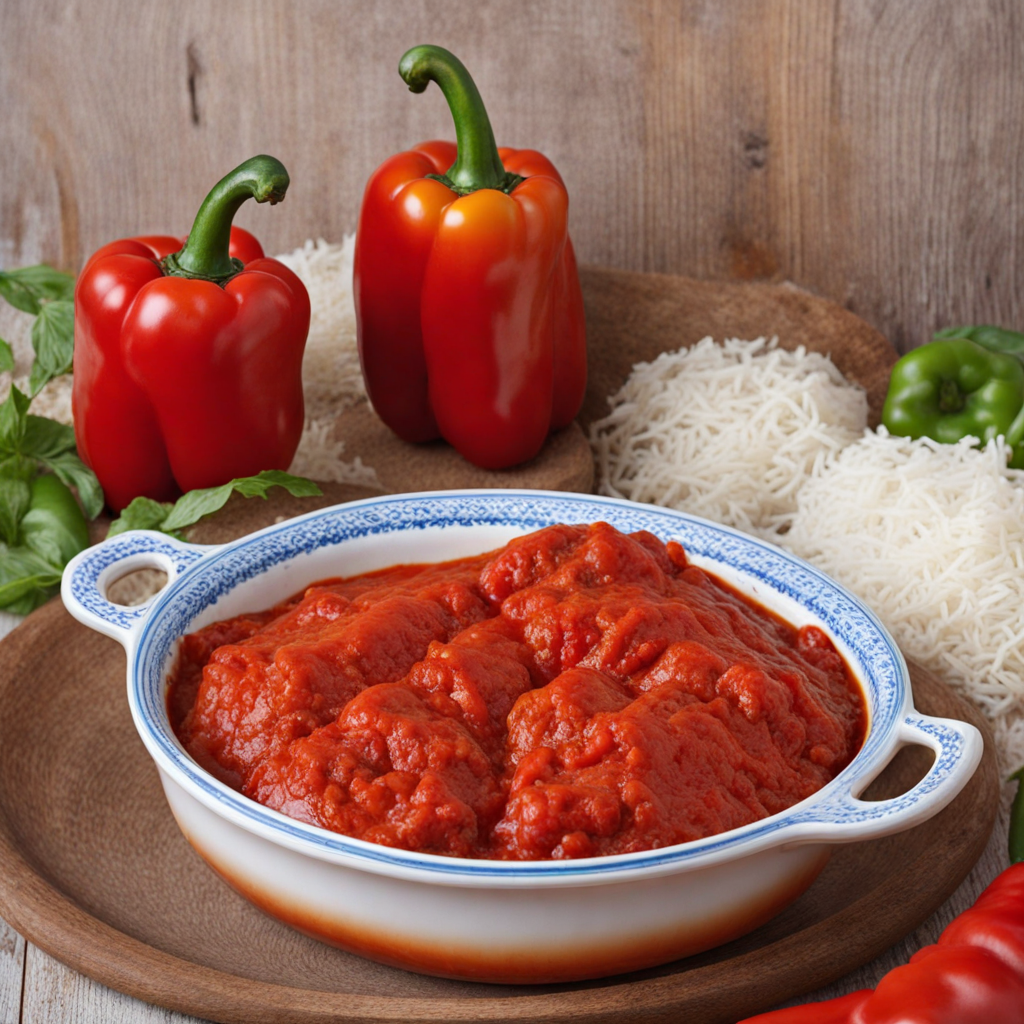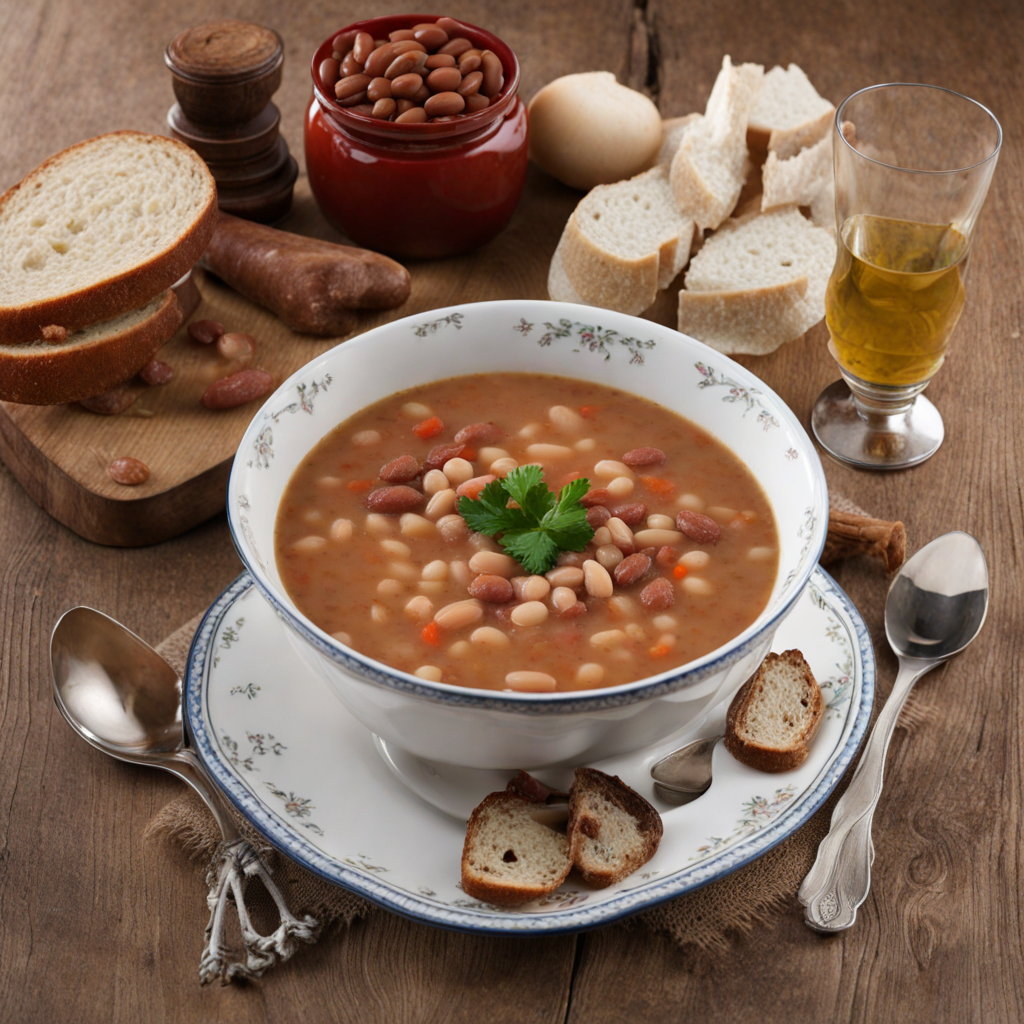Lángos
Lángos is a delightful street food originating from Hungary, known for its crispy exterior and soft, pillowy interior. This deep-fried flatbread is made from a simple dough of flour, water, yeast, and salt, which is allowed to rise before being shaped and fried to golden perfection. The result is a warm, slightly chewy bread that serves as the perfect canvas for a variety of toppings, making it a popular choice among locals and visitors alike. What truly sets lángos apart is its versatility in toppings. Traditionally, it is slathered with a generous layer of garlic-infused oil, followed by a sprinkle of grated cheese, sour cream, or even a dollop of yogurt. For the adventurous eater, lángos can also be adorned with toppings like ham, mushrooms, or even sweet variations featuring Nutella or fruit preserves. Each bite offers a delightful contrast of flavors and textures, from the crunchy outer layer to the warm, airy inside. Often enjoyed at fairs, markets, and food stalls, lángos embodies the spirit of Hungarian culinary culture. It’s a dish that invites sharing and communal enjoyment, often accompanied by a refreshing drink. The aroma of frying dough fills the air, drawing people in as they eagerly await their own piece of this delicious indulgence. Whether you savor it as a snack on the go or enjoy it as part of a larger meal, lángos is sure to leave a lasting impression on your taste buds.
How It Became This Dish
The History of Lángos: A Culinary Tradition from Hungary #### Origins Lángos, a beloved Hungarian street food, is a deep-fried flatbread that has captured the hearts and palates of many. Its origins are somewhat obscured by the mists of time, but it is widely believed that this dish has its roots in the medieval kitchens of Hungary. The name itself is derived from the Hungarian word "láng," which means "flame," hinting at the traditional preparation method that involves frying dough in hot oil, often over an open flame. Early references to flatbreads in European cuisines can be traced back to ancient civilizations, where simple mixtures of flour, water, and salt were cooked over heat. The Hungarians, influenced by their nomadic past and interactions with neighboring cultures, adopted and adapted these flatbread recipes. As the Hungarian Kingdom expanded and absorbed various culinary traditions, the concept of fried bread evolved into what we now know as lángos. #### Cultural Significance Lángos is much more than just a food item; it embodies a sense of community and tradition. In Hungary, it is often associated with fairs, festivals, and markets, where vendors serve up freshly fried lángos, enticing passersby with its golden-brown exterior and the irresistible aroma that wafts through the air. It has become a symbol of Hungarian culinary identity, enjoyed by locals and tourists alike. The dish is often served with a variety of toppings, ranging from the classic sour cream and grated cheese to more contemporary variations like garlic, paprika, or even sweet toppings like jam. This versatility speaks to the adaptability of lángos within the Hungarian culinary landscape, allowing it to cater to a wide array of tastes and preferences. Beyond its culinary role, lángos serves as a social connector. Sharing a portion of freshly made lángos among friends or family at a local festival fosters a sense of belonging and cultural pride. It embodies the spirit of togetherness that is deeply ingrained in Hungarian hospitality. #### Development Over Time As Hungary underwent significant historical changes, so too did the culinary landscape, including lángos. The Austro-Hungarian Empire, which existed from the late 19th century until the end of World War I, introduced a variety of culinary influences that enriched Hungarian cuisine. During this period, lángos began to be recognized beyond its humble origins, gaining popularity as a street food item across the empire. In the early 20th century, the industrial revolution brought about changes in food preparation and preservation. The advent of commercial frying oils made it easier for vendors to prepare lángos in large quantities, leading to its proliferation at local fairs and markets. This era also saw the introduction of new toppings and ingredients, such as local cheeses and fresh herbs, which further enhanced the flavor profile of the dish. Post-World War II, Hungary experienced significant political and social changes that influenced its culinary traditions. The communist regime promoted the idea of "people's cuisine," emphasizing dishes that were affordable and accessible to the masses. Lángos fit this description perfectly, as it was inexpensive to make and could be sold by street vendors, making it a staple for those seeking a quick and satisfying meal. In the late 20th century and early 21st century, as Hungary opened up to the world after the fall of communism, lángos began to gain international recognition. The dish was featured at various international food festivals, and Hungarian expatriates brought their culinary traditions with them, introducing lángos to new audiences. This led to an increase in the number of Hungarian restaurants and food stalls abroad, especially in countries with significant Hungarian communities, such as the United States, Canada, and Germany. #### Modern Variations and Global Influence Today, lángos has evolved beyond its traditional roots. While the classic fried version remains a favorite, innovative chefs and home cooks are experimenting with the dish, incorporating diverse ingredients and contemporary cooking techniques. For instance, some versions of lángos are now baked rather than fried, catering to health-conscious consumers. Additionally, global flavors have found their way into the dish, with toppings such as guacamole, Sriracha, or even sushi-inspired ingredients. The convenience of the internet has also played a role in the resurgence of lángos on a global scale. Social media platforms have allowed food enthusiasts to share their culinary creations, leading to viral trends that showcase the dish in new and exciting ways. Cooking shows and food blogs have introduced international audiences to the delights of lángos, inspiring home cooks to recreate this Hungarian favorite. Moreover, the rise of food trucks and pop-up eateries has provided a platform for lángos to gain popularity in urban settings, where diverse culinary options are increasingly sought after. These modern vendors often infuse their own cultural influences, creating fusion versions that continue to evolve the dish while honoring its Hungarian heritage. #### Lángos in Contemporary Hungary In Hungary, the appreciation for lángos remains strong. It is a common sight at outdoor festivals, summer fairs, and even at local markets. The preparation of lángos has become an art form in itself, with vendors competing to create the fluffiest, most flavorful versions of this traditional dish. In some regions, unique local variations have emerged, showcasing the richness of Hungary's culinary diversity. In recent years, lángos has also found its way into popular culture, appearing in cookbooks, television shows, and food festivals dedicated to celebrating Hungarian cuisine. This renewed focus on traditional foods has sparked interest among younger generations, who are eager to explore their culinary heritage while also embracing new trends. #### Conclusion Lángos is more than just a tasty fried flatbread; it is a symbol of Hungarian culture, history, and community. From its medieval origins to its modern-day adaptations, this iconic dish has continued to evolve, reflecting the changes in society, politics, and culinary trends. As it gains popularity on the international stage, lángos serves as a delicious reminder of Hungary's rich culinary heritage and the power of food to connect people across cultures and generations. Whether enjoyed at a bustling market in Budapest or attempted at home, lángos remains a cherished culinary treasure that tells the story of Hungary's past and present.
You may like
Discover local flavors from Hungary







